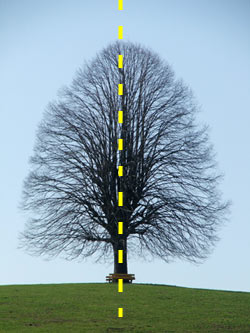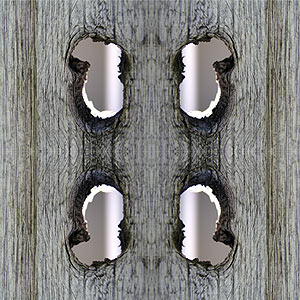Symmetry
Symmetry refers to visual elements mirrored to the other half of the surface or form, in the case of 3-dimensional objects. Symmetry requires an axis by which the mirroring occurs. This axis can be vertical (left-right mirroring), horizontal (top-bottom mirroring), or diagonal.
Rotational symmetry refers to a variation in symmetry that allows for more than one mirroring of visual elements around a central point, rather than an axis. A kaleidoscope is an example of rotational symmetry.
Related concept: asymmetry

Symmetry (vertical axis)

Symmetry in architecture: reconstruction of the Parthenon (vetical axis)

Symmetry (horizontal axis)
Claude Monet. Misty Morning on the Seine, Mauve. 1897.

Symmetry (vertical axis; symmetry does not have to be 100% identical across the axis)
Claude Monet. Pathway in Monet's Garden at Giverny. 1900.

Radial Symmetry (horizontal and veritcal axis)